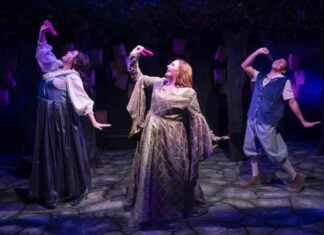In 2024, Jordi Sarsanedas (Barcelona 1924-2006) would have turned one hundred years old and his novel El martell, which turns seventy – it was published for the first time in the Club Editor, under the umbrella of Aymà, in 1954 – is the cornerstone of the rather timid celebration of the centenary. Sarsanedas was a key man in the Catalan miracle of the sixties, in the Agrupació Dramàtica de Barcelona and in Serra d’Or where he was a reasonable and respectful editor-in-chief, who opened the door to young people. He was a good teacher at the Institut Francès, and many of his students remember him. He began as a poet, made the transition to short fiction, wrote a great book – Mites (1954) – that, among others, influenced the young Quim Monzó and without which a part of Catalan narrative based on philosophy and philosophy would not be explained. fantastic with Maurici Pla and Marina Espasa at the helm. From the pages of this diary I had the pleasure of celebrating with great fanfare the books that he published when he grew up, when he once again had the time and desire to write. To say two: L’enlluernament, al cap del carrer (2001), poetry, and Una discrete venjança (2005), stories.
Jordi Sarsanedas’ father, Ramon Sarsanedas, was one of those Catalan artists of the 1930s – like the great Josep Granyer – who lacquered sculptures. Sarsanedas’s literature has something of a lacquer: it is modest, it shines, and immediately the fingerprints are marked on it. Although it is contemporary, it is beautiful and like from another era. Another notable aspect is that, since Ramon Sarsanedas and Rosa Vives were moderate people, linked to the Acció Catalana party, they went into exile in 1937: their son studied in France and returned from there with a degree. This explains that, as Manel Ollé very opportunely points out in the epilogue of this edition of El martell, Sarsanedas’s novels connect more with the books of Trabal or Calders who lived in Chile and Mexico than with those written here by his friends Capmany and Pedrolo. . That’s also why, when Ollé has the insight to relate El martell with the novels of Boris Vian, you think: yes.
Whenever The Martell comes to mind, Jean-Luc Godard’s Alphaville, a strange adventure of Lemmy Caution (1965) comes to mind immediately afterwards, which Sarsanedas anticipated by ten years. If we had to film a movie about El martell, the city of Novoconstança would be Barcelona. A realistic Barcelona to which it would not be necessary to add anything to make it become a city from another planet.
This game between a fantastic novel “of gavardina and pistol” (as the narrator of El martell says) and existential realism is one of the great successes of the book that connects with a tradition that reaches Peter Handke, Thomas Pynchon and Robert Coover. A crime has occurred, a man has died and the blood stain is shaped like a hammer. Unlike the pure “gavardina and pistol” novels, what leads to solving the enigma is not intelligence or logic but a long wandering in which the narrator –nephew of the victim, Caius Deva–, like a knife that It sinks into a piece of bacon, it crosses the layers of Novoconstança society, work, sports, leisure and love. Strangeness dominates everything.
El martell is a black and white novel, with characters who have become accustomed to living in a guitarless world. Of the many powerful things that I have found when reading it again, I want to highlight Panathlon, a sports club for rich kids waiting for the moment to collect their inheritance, in which a cocktail called mizzi triumphs. With one of those mizzi I toast to the much missed Jordi Sarsanedas and Joan Triadú (who signs the prologue), to Males Herbes and to Manel Ollé.








